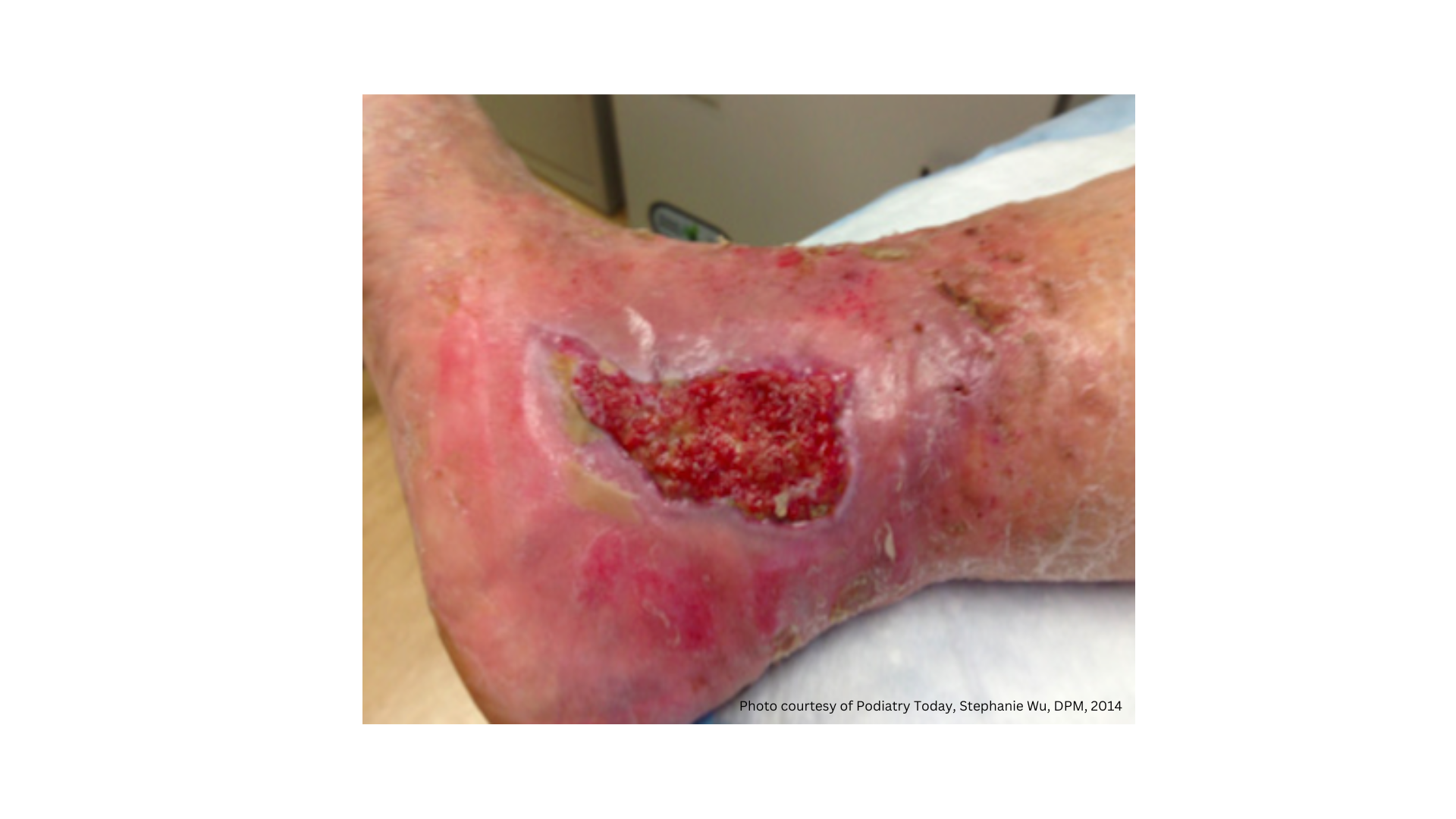Use of the SCALE Model in Palliative Wound Care
October 4, 2013
By Lindsay D. Andronaco RN, BSN, CWCN, WOC, DAPWCA, FAACWS
Part 1 in a series on skin failure
A few years ago, a panel of experts gathered to evaluate the nature of skin changes at life's end (SCALE) and to discuss the Kennedy Terminal Ulcer (KTU). The panel concluded that there are observable changes in the skin at the end of life and that these situations are complex. It should be noted that the skin is an organ and it can fail. The skin can also demonstrate what is happening internally, such as multisystem organ failure.
In April 2008 the SCALE model was established to help evaluate wound patients for appropriate care and to guide providers into making choices that are best for the patient. The panel also recognized that Kennedy Terminal Ulcers were unavoidable and related to organ and skin failure. The panel also stated that pressure ulcers fall into three categories:
- Healable within the individual’s life expectancy
- Maintained
- Non-healable or palliative
The SCALE model, as outlined in the Skin Changes at Life's End Final Consensus Statement, is a reflection of compromised skin, i.e. reduced soft tissue perfusion, decreased tolerance to external insults, and impaired removal of metabolic wastes. The risk factors for SCALE have not all been defined yet. The main contributing factors when preforming an assessment are: limitation of mobility, nutrition, low pre-albumin/albumin, diminished tissue perfusion, impaired immune function, and exposure to external risks (such things as friction, shear, infection, or bodily fluids).
It takes a multidisciplinary team effort to ensure appropriate care plans are in place while ensuring the dignity of the patient. A thorough skin assessment should still be part of regular documentation. As with all plans of care and assessments, including those for patients who are at life's end, it is important to document all conversations, concerns, and refusals of care.
I have used the SCALE teaching model to explain to providers that a patient does in fact meet criteria for palliative wound care. However, in my practice, I then noticed that I was already using this flow model and using the "5Ps" to evaluate ALL wounds; not just those at the end of life. I feel that it is important to utilize this tool in all patient wound care and utilize a holistic and individualized approach when creating a treatment plan. Goals also must be realistic from all parties - family, patient, and healthcare professionals. Palliative care is not "giving up." It is important to discuss with all members that skin organ compromise may be an unavoidable part of the dying process.
Sources:
Gentzkow GD, et al. Improved healing of pressure ulcers using Dermapulse, a new electrical stimulation device. Wounds. 1991;3(5):158-170.
Hiser B, Rochette J, Philbin S, et al. Implementing a pressure ulcer prevention program and enhancing the role of the CWOCN: impact on outcomes. Ostomy Wound Manage. 2006;52(2):48-59.
Kennedy-Evans K. Understanding the Kennedy Terminal Ulcer. Ostomy Wound Manage. 2009;55(9):6.
Kennedy Terminal Ulcer. Kennedy Terminal Ulcer Information and Warning Signs. Kennedy Terminal Ulcer. http://www.kennedyterminalulcer.com/. Accessed October 2, 2013.
Langemo D, Brown G. Skin fails too: Acute, chronic, and endstage skin failure. Adv. Skin and Wound Care. 2006;19(4):206-211.
National Pressure Ulcer Advisory Panel. Pressure Ulcer Category/Staging Illustrations. National Pressure Ulcer Advisory Panel. http://www.npuap.org/resources/educational-and-clinical-resources/press…. Accessed October 2, 2013.
Schank J. Kennedy Terminal Ulcer: The “Ah-Ha!” Moment and Diagnosis. Ostomy Wound Manage. 2009;55(9):40-44.
Sibbald RG, Krasner DL, Lutz JB, et al. The SCALE Expert Panel: Skin Changes At Life’s End. Final Consensus Document. October 1, 2009.
Yastrub D. Pressure or Pathology - Distinguishing Pressure Ulcers from the Kennedy Terminal Ulcer. Wound Ostomy Continence Nursing. 2010; 37 (3): 249-250.
About the Author
Lindsay (Prussman) Andronaco is board certified in wound care by the Wound Ostomy Continence Nursing Certification Board. She also is a Diplomate for the American Professional Wound Care Association. Her clinical focus is working with Diabetic Limb Salvage/Surgical/Plastic Reconstruction patients, though her interests and experience are varied and include surgical, urological and burn care, biotherapeutics and Kennedy Terminal Ulcer research. Lindsay is the 2011 recipient of the Dorland Health People's Award in the category of 'Wound Ostomy Continence nurse' and has been recognized in Case In Point Magazine as being one of the "Top People in Healthcare" for her “passionate leadership and an overall holistic approach to medicine.”
Lindsay is board certified in wound care by the Wound Ostomy Continence Nursing Certification Board. She also is a Diplomate for the American Professional Wound Care Association. In 2011, Lindsay was honored with the Dorland Health People's Award in the category of 'Wound Ostomy Continence nurse.'
The views and opinions expressed in this blog are solely those of the author, and do not represent the views of WoundSource, Kestrel Health Information, Inc., its affiliates, or subsidiary companies.
The views and opinions expressed in this content are solely those of the contributor, and do not represent the views of WoundSource, HMP Global, its affiliates, or subsidiary companies.







